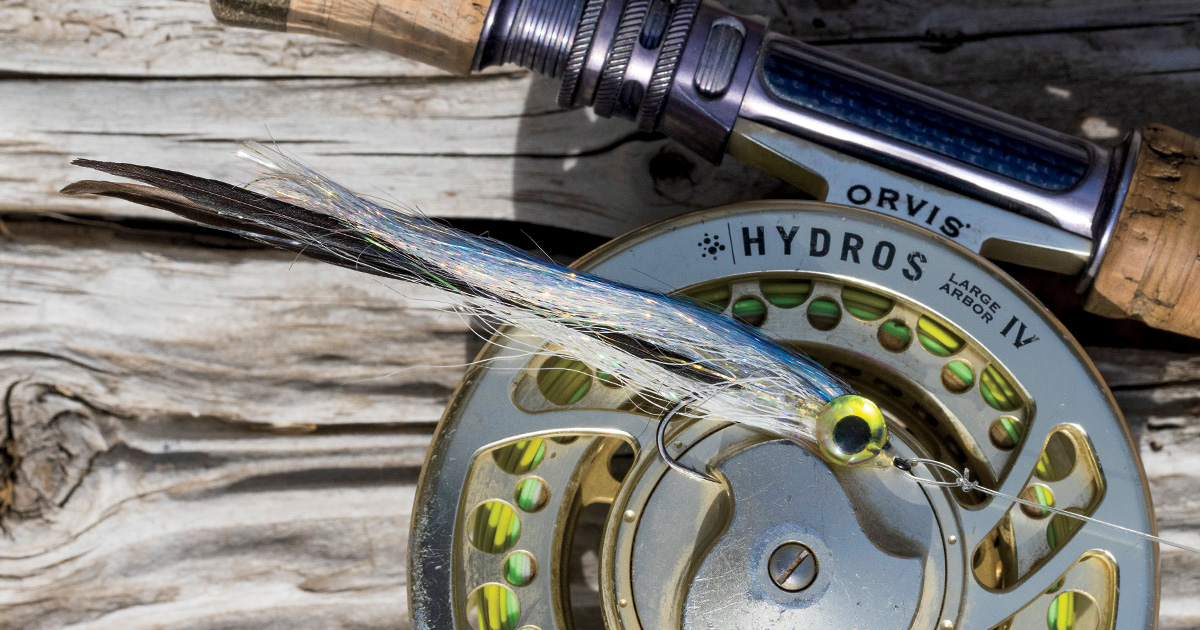Waterfowler's World: Feathers for Flies
Many waterfowlers are sitting on a gold mine of fly-tying materials
Many waterfowlers are sitting on a gold mine of fly-tying materials

By Bill Buckley

Royal Coachman, Quill Gordon, Clouser Crayfish, CDC Emerger, WD-40, Balmoral. If you recognize any of those names, you’re probably a fly fisherman. But did you know that these are just a few of the many traditional and modern fly patterns that are made with duck and goose feathers? It is perfectly legal for waterfowlers who are also flytiers to use feathers from birds they have harvested.
Feathers from drake wood ducks, mallards, and green-winged teal are by far the most popular, mostly due to their coloration and abundance. The “lemon” flank feathers from a wood duck are prized for their color and barring. A mallard’s “cul de canard” feathers are sought after for their buoyancy. Other popular mallard feathers include the shoulder feathers, or tertials (commonly referred to as “bronze” feathers), as well as breast and belly feathers. Matched sets of mallard hen flank feathers are excellent for the claws on many crayfish patterns. Gadwall, pintail, and wigeon drakes have heavily barred flank and shoulder feathers, with gadwalls sporting additional barred feathers on their breasts and back. Although diver feathers are not generally coveted, the barred flank feathers from a ringneck are worth collecting.
If you’ve ever wanted to tie your own flies or have flyfishing buddies who already do so, here’s a brief primer on collecting feathers from waterfowl that you have harvested.
The distinct and minutely mottled barring of flank feathers makes them prized for their “buggy” appearance. They are ideal for legs and tails on nymphs and emergers, soft hackles on wet flies, dry-fly wings, and wings and shoulders on salmon flies and streamers. They’re located under the wing on a duck’s side, from the wing butt down to where the legs meet the body. They can be plucked easily as a group by running your fingers underneath the pod of feathers from the legs going forward. Store them with the flank feathers from the opposite side for fly patterns that require matching feathers.
Commonly known as CDC feathers, they are found around the uropygial, or preen, gland—a small, waxy bump just forward of the tail joint under a duck’s back feathers. The oil produced by this gland enables waterfowl to keep their feathers from absorbing water, and the small, wispy feathers surrounding it are prized for their natural waterproofing. Their buoyancy is further enhanced by the soft, multi-branched fibers that trap air molecules, and those same networks of fibers undulate with the slightest current or movement, making flies appear alive and realistic. CDCs are especially prized for emergers and nymphs, as well as dubbing for bodies.
Wing feathers of many ducks, especially mallards, are widely used. What flytiers refer to as the “quills” of primary feathers (the longer, rearward fibers) are popular for wings and wing cases on nymphs, wet flies, and dry flies. The stiff, short barbs, or “biots,” on the leading edge of Canada goose primaries are used as tails, segmented bodies, and wings for many standard nymph patterns, including the ubiquitous Prince nymph.
Wing feathers can be harvested by removing them individually, in groups, or as whole wings. The primaries are easily collected by clipping them off at the first wing joint. The long shoulder feathers covering the wing butt can be plucked together and are used for everything from steelhead and salmon flies to streamers, wet and dry flies, and nymphs. Regardless of how you harvest them, they should be collected in matched sets from both wings. Breast and belly feathers can be plucked individually and stored by size and coloration.
To prevent damage from insects and parasites, be sure to store all feathers in airtight bags. It’s also a good practice to alternately freeze and thaw them to kill any naturally occurring parasites or mites. All flesh and fat should be removed from any body parts, such as whole or partial wings. For whole duck pelts, you’ll need to be especially mindful. Needless to say, the cleaner and better condition you keep your ducks in the field, the more valuable they’ll be for tying flies.
Ducks Unlimited uses cookies to enhance your browsing experience, optimize site functionality, analyze traffic, and deliver personalized advertising through third parties. By continuing to use this site, you agree to our use of cookies. View Privacy Policy